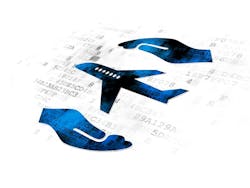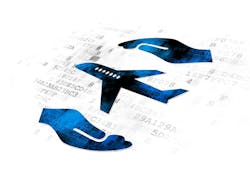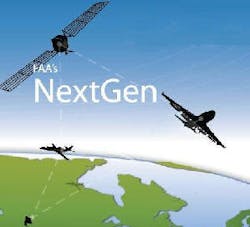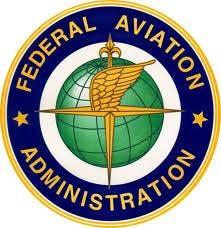FAA needs more comprehensive approach to address cybersecurity in transition to NextGen
WASHINGTON, 4 March 2016. The Federal Aviation Administration (FAA) needs a better approach to securing and protecting air traffic control (ATC) information systems and aircraft avionics against cybersecurity threats, according to U.S. Government Accountability Office (GAO) officials in Washington. The GAO published a report (GAO-15-370), entitled “FAA Needs a More Comprehensive Approach to Address Cybersecurity,” outlining the agency’s security challenges and potential shortcomings.
As the agency transitions to the Next Generation Air Transportation System (NextGen), the Federal Aviation Administration (FAA) faces cybersecurity challenges in at least three areas:
(1) protecting air-traffic control (ATC) information systems,
(2) protecting aircraft avionics used to operate and guide aircraft, and
(3) clarifying cybersecurity roles and responsibilities among multiple FAA offices.
The FAA has taken steps to protect its ATC systems from cyber-based threats; however, significant security-control weaknesses remain that threaten the agency's ability to ensure the safe and uninterrupted operation of the national airspace system.
FAA has agreed to address these weaknesses. Nevertheless, FAA will continue to be challenged in protecting ATC systems because it has not developed a cybersecurity threat model. National Institute of Standards and Technology (NIST) guidance, as well as experts GAO consulted, recommend such modeling to identify potential threats to information systems, and as a basis for aligning cybersecurity efforts and limited resources. While FAA has taken some steps toward developing such a model, it has no plans to produce one and has not assessed the funding or time that would be needed to do so. Without such a model, FAA may not be allocating resources properly to guard against the most significant cybersecurity threats.
Modern aircraft are increasingly connected to the Internet. This interconnectedness can potentially provide unauthorized remote access to aircraft avionics systems. As part of the aircraft certification process, FAA's Office of Safety (AVS) currently certifies new interconnected systems through rules for specific aircraft and has started reviewing rules for certifying the cybersecurity of all new aircraft systems.
FAA is making strides to address the challenge of clarifying cybersecurity roles and responsibilities among multiple FAA offices, such as creating a Cyber Security Steering Committee (the Committee) to oversee information security. However, AVS is not represented on the Committee but can be included on an ad-hoc advisory basis. Not including AVS as a full member could hinder FAA's efforts to develop a coordinated, holistic, agency-wide approach to cybersecurity.
FAA's acquisition management process generally aligned with federal guidelines for incorporating requirements for cybersecurity controls in its acquisition of NextGen programs. For example, the process included the six major information-technology and risk-management activities as described by NIST. Timely implementation of some of these activities could have been improved based on their importance to NextGen, cost, and deployment status. The Surveillance and Broadcast Services Subsystem (SBSS)—which enables satellite guidance of aircraft and is currently deployed in parts of the nation—has not adopted all of the April 2013 changes to NIST security controls, such as intrusion detection improvements, although the Office of Management and Budget guidance states that deployed systems must adopt changes within one year. Systems with weaknesses that could be exploited by adversaries may be at increased risk if relevant controls are not implemented.
FAA is responsible for overseeing the national airspace system, which comprises ATC systems, procedures, facilities, and aircraft, and the people who operate them. FAA is implementing NextGen to move the current radar-based ATC system to one that is based on satellite navigation and automation. It is essential that FAA ensures effective information-security controls are incorporated in the design of NextGen programs to protect them from threats.
GAO recommends that FAA:
1) assess developing a cybersecurity threat model,
2) include AVS as a full member of the Committee, and
3) develop a plan to implement NIST revisions within OMB's time frames. FAA concurred with recommendations one and three, but believes that AVS is sufficiently involved in cybersecurity. GAO maintains that AVS should be a member of the Committee.
For more and to read the 56-page report, visit http://www.gao.gov/products/GAO-15-370
You might also like:
Subscribe today to receive all the latest aerospace technology and engineering news, delivered directly to your e-mail inbox twice a week (Tuesdays and Thursdays). Sign upfor your free subscription to the Intelligent Inbox e-newsletter at http://www.intelligent-aerospace.com/subscribe.html.
Connect with Intelligent Aerospace on social media: Twitter (@IntelligentAero), LinkedIn,Google+, and Instagram.
Intelligent Aerospace
Global Aerospace Technology NetworkIntelligent Aerospace, the global aerospace technology network, reports on the latest tools, technologies, and trends of vital importance to aerospace professionals involved in air traffic control, airport operations, satellites and space, and commercial and military avionics on fixed-wing, rotor-wing, and unmanned aircraft throughout the world.




